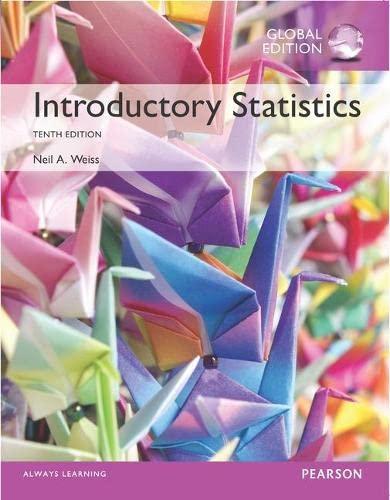Laughter. The effect of laughter was studied in the article Energy Expenditure of Genuine Laughter (International Journal
Question:
Laughter. The effect of laughter was studied in the article
“Energy Expenditure of Genuine Laughter” (International Journal of Obesity, Vol. 31, pp. 131–137) by M. Buchowski et al. Subjects were split into groups of two males, one male and one female, or two females. The subjects viewed film clips intended to evoke laughter.
The statistics in the first row of the following table provide the standard deviations of heart-rate increase, in beats per minute, for the two same-gender groups.
Male-male Female-female s1 = 4.76 s2 = 3.72 n1 = 8 n2 = 20 Find a 90% confidence interval for the ratio of the population standard deviations of heart-rate increase when laughing for male-male and female-female dyads. (Note: For df = (19, 7), F0.05 = 3.46.)
Working with Large Data Sets
Step by Step Answer:






